Evert Musch (Groningen, March 16, 1918 - Anloo, December 5, 2007) was a Dutch painter.
Contents

Evert Musch (Groningen, March 16, 1918 - Anloo, December 5, 2007) was a Dutch painter.

Musch studied at Academie Minerva (1936–1940) in his hometown Groningen, where he studied under Willem Valk , Arnold Willem Kort Kort [1] and C.P. de Wit. From 1947 to 1981, Musch was lecturer at the Academy Minerva, succeeding his former teacher De Wit. He was a teacher of amongst others Henk Helmantel , Wim Crouwel and Martin Tissing . [2] Musch married in 1943 painter Johanna (To) Jager, whom he had met at Academy Minerva. Musch was a member of the artists movement "De Jongeren" (1941–1942) and of the "Drentse Schilders" (1947–1953). In 1954 he was co-founder of the "Drents Schilders Genootschap". [3]
In 1985 he was awarded the Cultural Prize of Drenthe . The Drents Museum in Assen held a retrospective of his work in 1988. [4]
Musch made oil paintings and watercolors and his subjects include landscapes and portraits in naturalistic-impressionistic style. He also worked as a lithographer and illustrator of books, including "Kinderen in verstand en boosheid", [5] by the writer Piet Keuning .
The Stripschapprijs is a Dutch prize awarded to comic creators for their entire body of work. It is awarded annually by the Stripschap, the Dutch Society of comics fans, since 1974. The prize is non-pecuniary, but is considered the most important award for comics in the country.
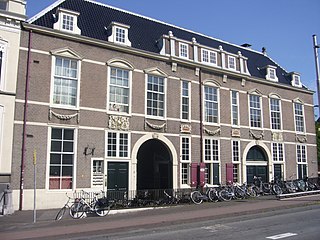
The Confrerie Pictura was a more or less academic club of artists founded in 1656 in The Hague by local art painters, who were unsatisfied by the Guild of Saint Luke there.

Academie Minerva is a Dutch art academy.
Willem van Zeist was a Dutch archaeobotanist and palynologist. He was the director of the Biologisch-Archaeologisch Instituut at the University of Groningen.
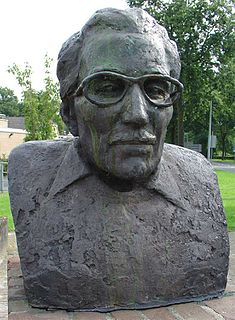
Hans Heyting, born Johannes Heijting was a Dutch poet, playwright, radio personality, children's book writer and painter. Writing in Drèents, he was one of the earliest Drèents writers to express personal themes and is considered to have been "the first true, modern Drèents poet who innovated old forms and showed new ways".
Franciscus Hermanus Bach, officially Bachg, was a Dutch painter.

Ferdinand Anno (Anno) Smith was a Dutch artist, who worked as ceramist, painter, sculptor and art teacher.

Matthijs Nicolaas Röling is a Dutch painter, active as graphic designer, wall painter, painter, draftsman, lithographer, pen artist, etcher, and academy lecturer. He is considered a kindred spirit of the 3rd generation of the Dutch Group of figurative abstraction. Röling is described as the "figurehead of contemporary figurative painting in the Netherlands."
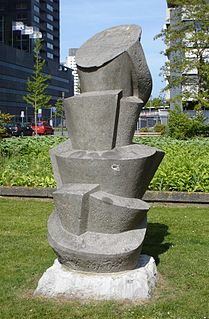
Pieter Antonie van Stuivenberg was a Dutch artist, who was active as sculptor, painter, lithographer, and graphic artist.
The Laren School is the name of an art colony located in the Dutch village, Laren, in the Gooi near Hilversum. The artists of this offshoot of the Hague School chose the inhabitants of Laren and the surrounding landscape as the subject of their art.

Otto Eerelman was a Dutch painter; best known for his depictions of dogs and horses. He was also a court painter and did several portraits of Wilhelmina, as Princess and Queen.

Johannes Hinderikus Egenberger, originally Joannes Henricus, was a Dutch painter, photographer and art educator.
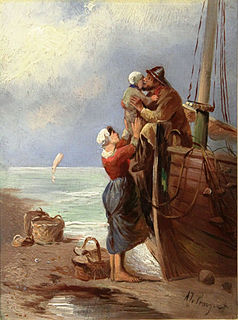
Albert Jurardus van Prooijen was a Dutch painter of cityscapes, landscapes and genre scenes.
Peter Hartwig is a Dutch painter.
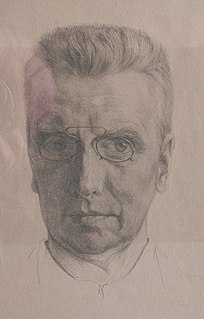
Simon Moulijn was a Dutch painter, draughtsman and graphic artist. He was one of the eminent visual artists of his time and became especially well known for his lithographic works.
Willem Albertus"Wim"van Es is a Dutch archaeologist. Between 1965 and 1988 he was director of the Rijksdienst voor het Oudheidkundig Bodemonderzoek.
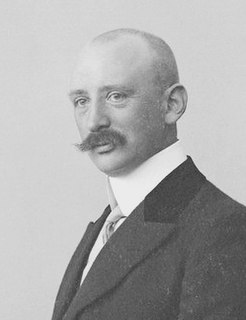
Dirk de Vries Lam was a Dutch painter who specialized in cityscapes. The name De Vries, from his mother's side of the family, was added, by official permission, in 1897.
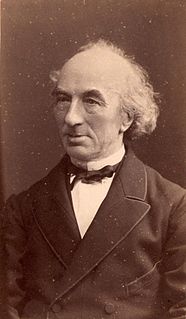
Jan Ensing, or Ensingh was a Dutch painter, graphic artist, and lithographer; primarily known for his portraits.

Willem Albert Scholten was a Dutch industrialist and landowner. He established the potato starch factory Eureka in Foxhol which laid the foundation of an industrial empire. Scholten would own 24 factories in Europe. He owned large plots of land in Drenthe for peat extraction, and was one of the founders of what would become the Holland America Line. In Groningen, Scholten built the Scholtenhuis, a large residential house on the Grote Markt, the main square, opposite the City Hall.
{{cite web}}: CS1 maint: archived copy as title (link)